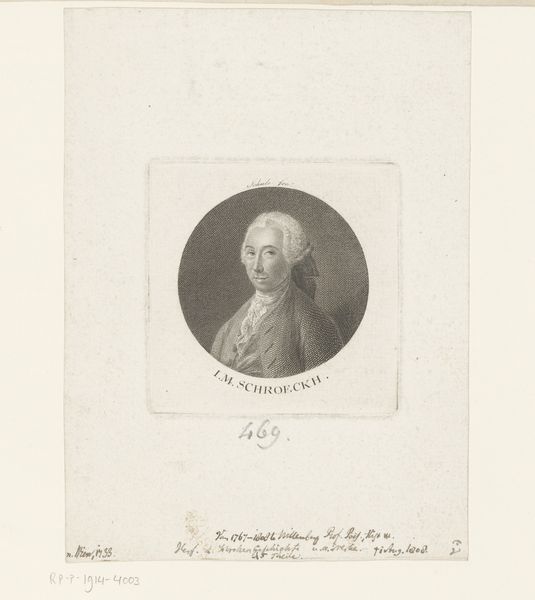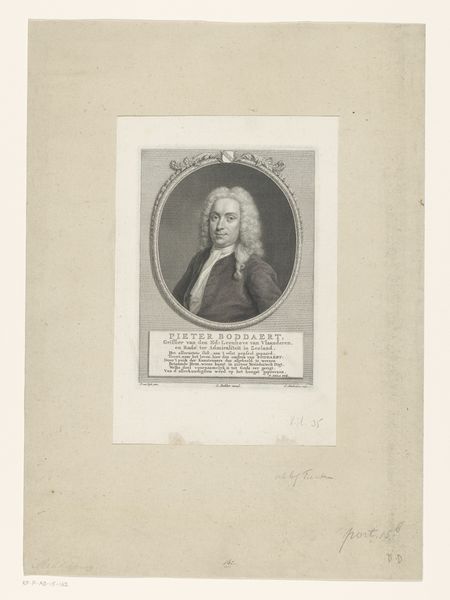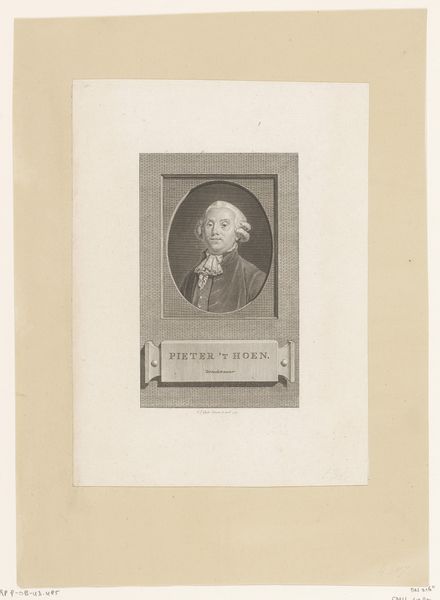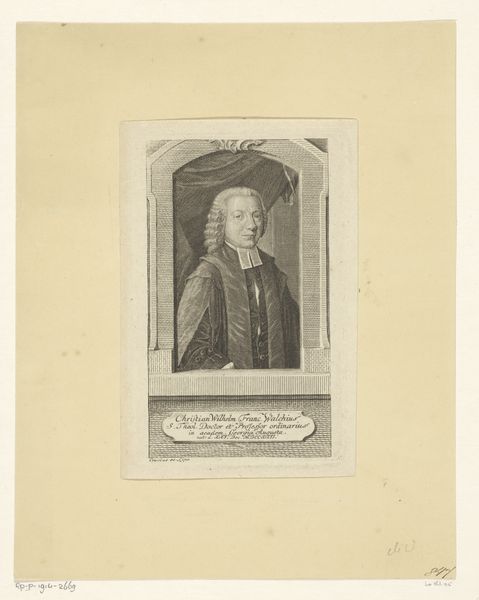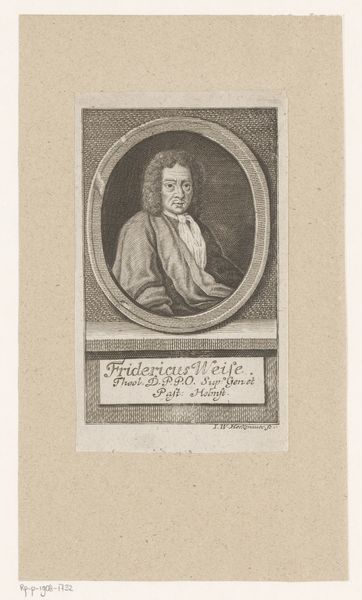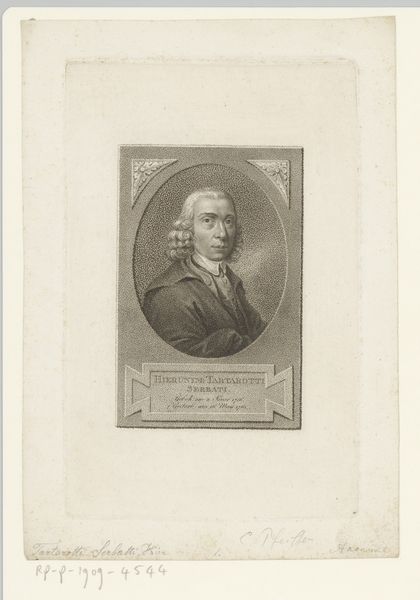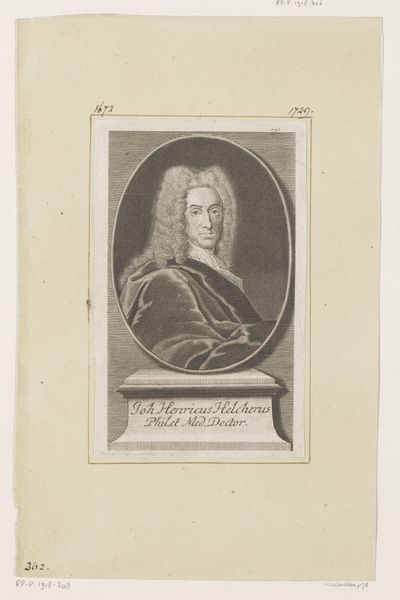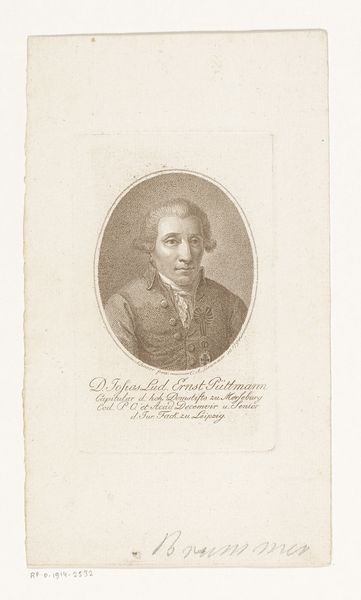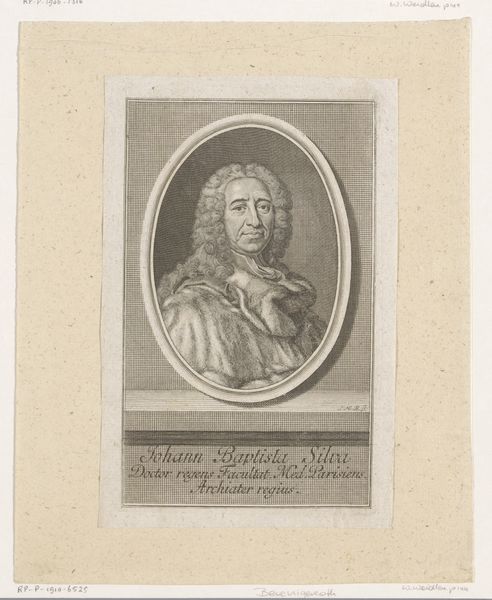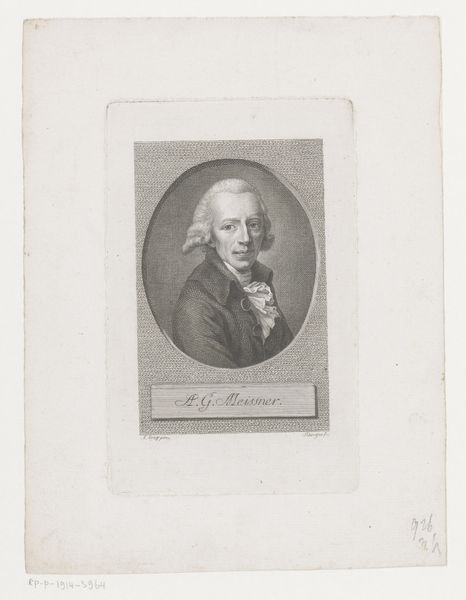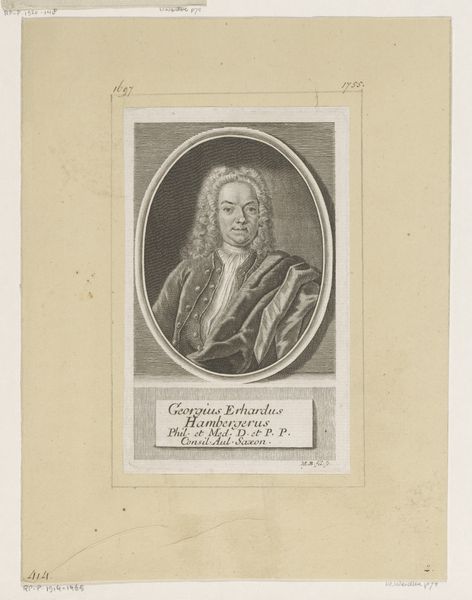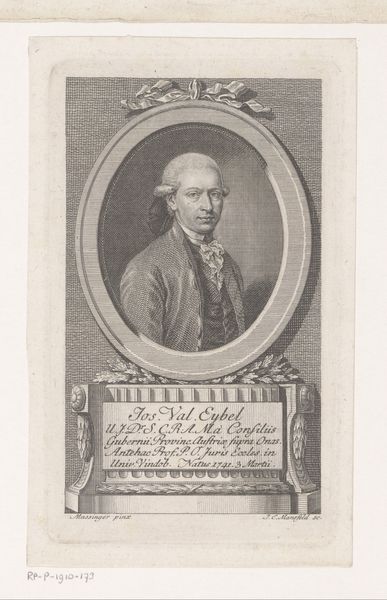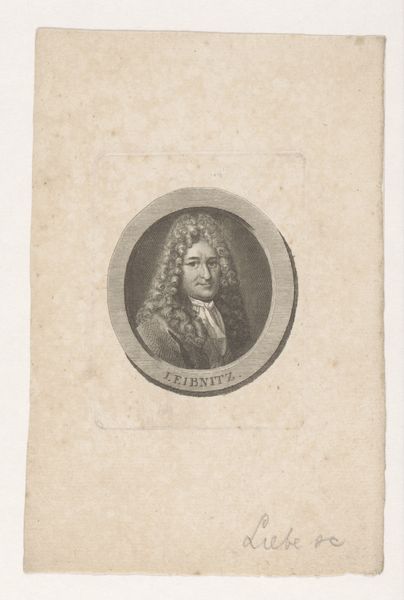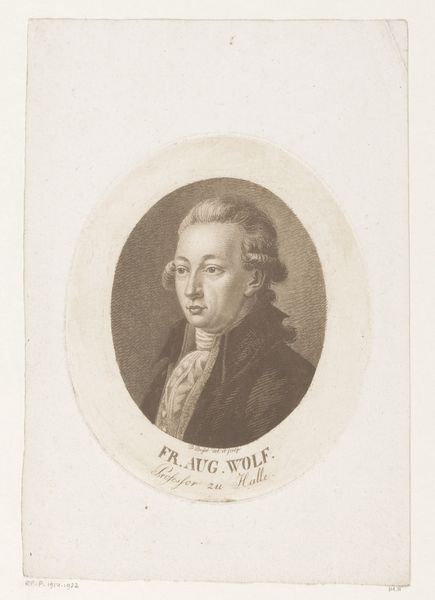
print, pencil, engraving
#
portrait
#
pencil drawn
#
neoclacissism
# print
#
pencil sketch
#
pencil
#
pencil work
#
engraving
Dimensions: height 92 mm, width 81 mm
Copyright: Rijks Museum: Open Domain
Editor: This is a fascinating portrait. It’s entitled "Portret van Johann Wilhelm Schmid," made around 1795. It looks like it's a print, maybe an engraving. What really strikes me is the stark simplicity of it. It's very direct. How do you interpret this work? Curator: Immediately, the circular framing speaks volumes. In Neoclassical portraiture, the circle often represents eternity, but here, contained within a square, the tension suggests more than mere immortalization. Editor: More like what? Curator: Consider his direct gaze. It bypasses the conventions of courtly portraiture, which often served as symbols of dynastic power. His expression isn't idealized. Do you notice any personal identifiers? Editor: The somewhat unruly wig, maybe? And that very plain jacket. He doesn’t look particularly powerful or wealthy. Curator: Precisely. Look at the inscription – the dates of birth and death. The framing is constricting him to be viewed not just as ‘eternal’ in fame, but more mortal within earthly boundaries. The directness of the engraving flattens depth and suggests more about societal boundaries perhaps rather than an immortal legacy. It is to me, in itself, symbolic of shifting ideals, towards reason. Editor: So it's more about conveying a particular philosophy, about life, more than simply portraying the man? Curator: Absolutely. This small portrait speaks volumes about Neoclassical values versus those of previous eras; that’s what speaks volumes about cultural memory, in my opinion. Editor: I never would have thought to look at it that way! Thanks. Curator: My pleasure. Looking at these works reveals such subtle yet striking symbols that hold profound depths and are very memorable.
Comments
No comments
Be the first to comment and join the conversation on the ultimate creative platform.
